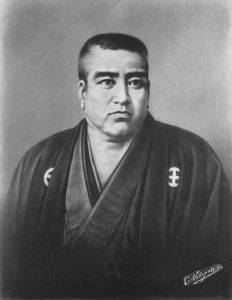“We are both warlike and wise, and it is our sense of order that makes us so. We are warlike, because self-control contains honour as a chief constituent, and honour bravery… Nor ought we to believe that there is much difference between man and man, but to think that the superiority lies with him who is reared in the severest school.” (Archidamus, king of Sparta, in advising his people not to rush to war against Athens, before the outbreak of the Peloponnesian War – as quoted by Thucydides, trans. Richard Crawley.)
The samurai of Satsuma, who embraced “bravery and strength as the ultimate virtues,” were probably every bit as warlike as the warriors of ancient Sparta, and severity was certainly a hallmark of their character. The young men of Satsuma played a deadly game wherein a group of them would gather at a martial arts training hall, sit around a wide circle, fasten a rope to a loaded musket, hang the musket from the wooden rafters above (face-level at the center of the circle), light the matchlock and spin the gun so that it would alternately point in the direction of each of them – as they calmly waited for it to fire. Their purpose, of course, was to train their minds for combat, steeling their nerves in the face of imminent death.
So why were the samurai of Satsuma so particularly warlike? The characteristics and history of the Satsuma clan, focusing on the last years of the samurai era (1853-1877), are analyzed in Samurai Revolution.

Quintessential samurai Saigo Takamori, the military and moral leader of the samurai of Satsuma during this most turbulent period in their history, is used in Samurai Revolution, courtesy of Japan’s National Diet Library.
For updates about new content, connect with me on Facebook.

